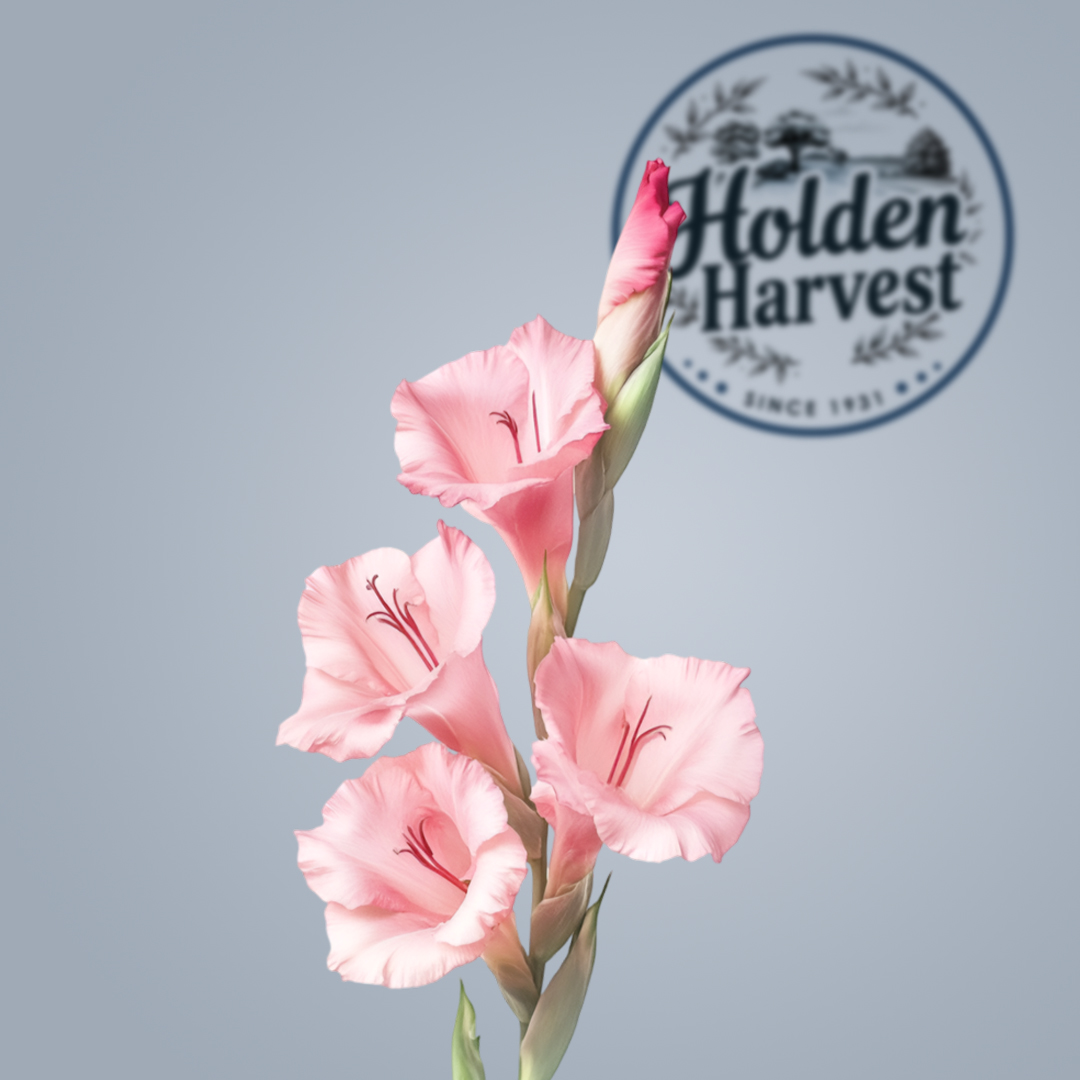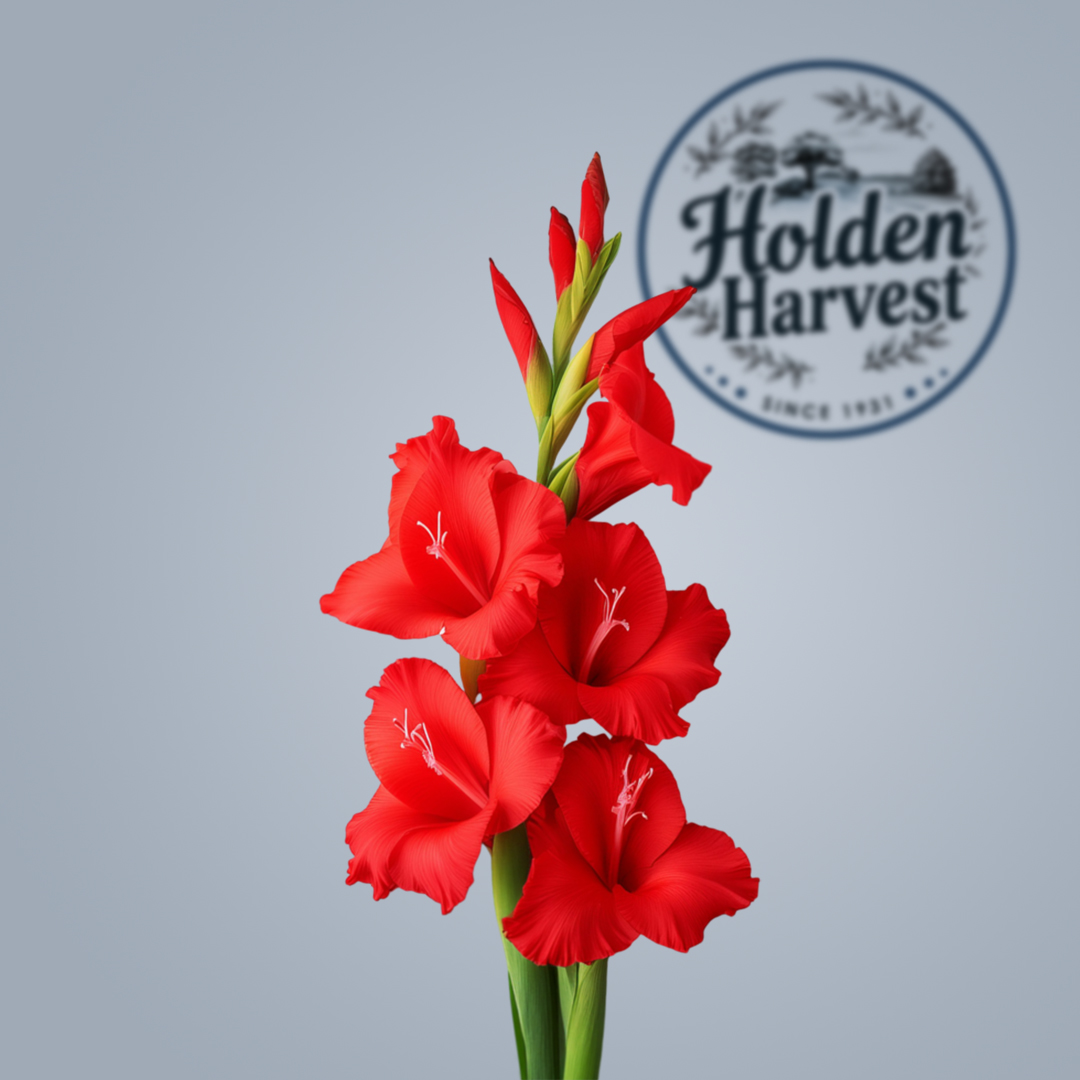The Gladiolus flower, also known as the sword lily, is a stunning plant admired for its tall spikes and vibrant colors. It belongs to the Iridaceae family and is widely cultivated for gardens, floral arrangements, and symbolic meanings. With its striking blooms and graceful appearance, it remains a favorite among flower enthusiasts
type of Gladiolus:
Gladiolus plants grow upright, producing long stems adorned with trumpet-shaped flowers. These blossoms appear in various shades, including red, pink, yellow, orange, white, and purple. The leaves are sword-like, adding to their dramatic look. The flowers bloom sequentially from the bottom of the spike to the top, ensuring a prolonged display.

To thrive, Gladiolus requires well-drained soil and a sunny location. It flourishes in warm temperatures and prefers a pH level of 6.0 to 7.0. Proper spacing between bulbs ensures healthy growth and prevents overcrowding. Regular watering keeps the plants hydrated, but excessive moisture should be avoided.
Large-Flowered Gladiolus: These gladiolus varieties produce tall spikes with large, vibrant blooms. They are commonly used in floral arrangements and garden displays due to their striking appearance.
Miniature Gladiolus: Smaller in size, these gladiolus varieties have delicate, compact flowers. They are ideal for container gardening and add charm to small spaces with their colorful blossoms.
Choose a sunny spot: At least six hours of sunlight per day is essential.
Gladiolus is prone to thrips, aphids, and fungal diseases. Regular inspection and organic insecticides help control infestations. Ensuring proper air circulation reduces the risk of mold and mildew.

1. How long does it take for Gladiolus to bloom?
Gladiolus flowers appear 8 to 12 weeks after planting, depending on the variety and growing conditions.
2. Can Gladiolus be grown in pots?
Yes, they thrive in containers with good drainage. Choose deep pots to accommodate the roots.
3. When should Gladiolus bulbs be planted?
They should be planted in spring after the last frost, ensuring warm soil for proper growth.
Gladiolus flowers bring elegance, symbolism, and vibrant color to any space. Their beauty, ease of care, and multiple uses make them a perfect addition to gardens and floral arrangements.